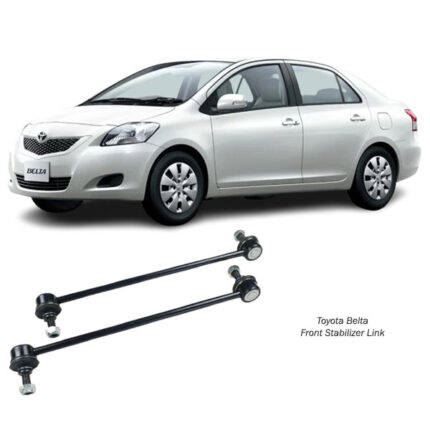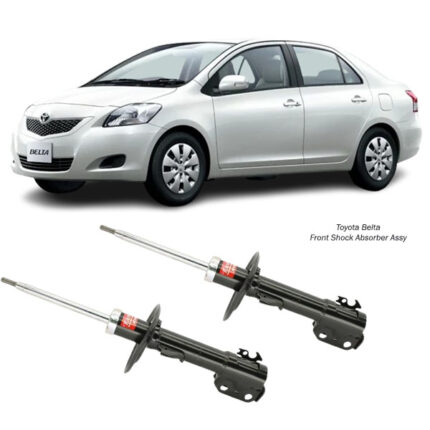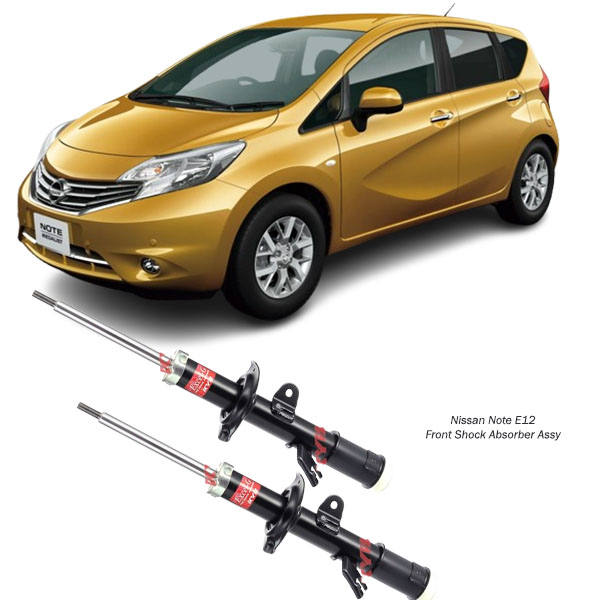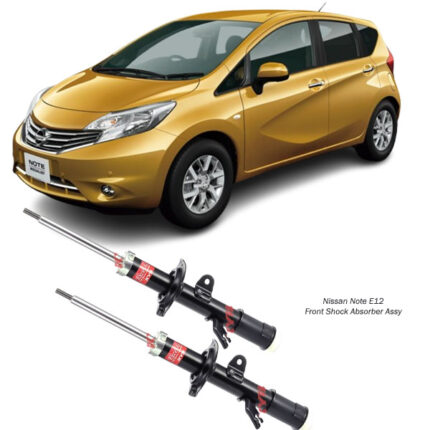Get Nissan Note E12 Front Shock Absorber Assy 332148 in Kenya
The Front Shock Absorber Assembly (Front Shock Absorber Assy) is an essential component of a vehicle’s suspension system, designed to enhance stability, improve ride comfort, and ensure safety while driving. Without shock absorbers, every bump, pothole, or uneven road surface would send vibrations and jolts directly into the vehicle’s body, making driving uncomfortable and potentially dangerous.
This guide will cover everything you need to know about front shock absorbers, including their function, types, symptoms of failure, replacement process, and maintenance tips. Whether you’re a car enthusiast or just want to understand your vehicle better, this detailed explanation will help you make informed decisions about maintaining and replacing your front shock absorbers.
1. What Is a Front Shock Absorber Assembly?
A Front Shock Absorber Assembly is a complete unit that includes the shock absorber, mounting hardware, and sometimes additional components like a spring (if it is part of a MacPherson strut system).
1.1 Role in the Suspension System
The front shock absorber assembly performs the following critical functions:
Absorbs shocks from road bumps and potholes.
Maintains tire contact with the road for better traction.
Enhances steering control and stability.
Reduces vibrations and ensures a smooth ride.
Prevents excessive body roll during turns.
1.2 How It Works
When the vehicle encounters an uneven surface, the suspension compresses, and the shock absorber controls this motion using hydraulic fluid or gas pressure. This dampens vibrations and prevents excessive bouncing, ensuring the vehicle remains stable and responsive to steering inputs.
2. Types of Front Shock Absorbers
There are different types of front shock absorbers, each designed for specific driving conditions and vehicle needs.
2.1 Hydraulic (Oil-Filled) Shock Absorbers
- Uses hydraulic fluid to absorb and dissipate kinetic energy.
- Provides a smooth ride but may overheat under heavy use.
- Common in standard passenger vehicles.
2.2 Gas-Charged Shock Absorbers
- Contains pressurized nitrogen gas to prevent foaming of hydraulic fluid.
- Offers better response time and performance compared to hydraulic shocks.
- Ideal for high-performance and off-road vehicles.
2.3 Coilover Shock Absorbers
- Combines a shock absorber and coil spring in a single unit.
- Allows for adjustable ride height and damping.
- Common in racing and sports cars.
2.4 Mono-Tube vs. Twin-Tube Shocks
- Mono-Tube: A single chamber with better heat dissipation and improved response.
- Twin-Tube: A dual-chamber design that provides a smoother ride but can suffer from fluid aeration.
3. Signs of a Failing Front Shock Absorber Assembly
Shock absorbers wear out over time, affecting ride quality and safety. Here are the most common signs that your front shocks need attention:
3.1 Excessive Bouncing
- If the vehicle continues to bounce after hitting a bump, the shock absorbers may be failing.
3.2 Unstable Steering and Handling
- The car may feel difficult to control, especially during turns or sudden maneuvers.
3.3 Nose-Diving When Braking
- If the front end of the car dips down excessively when braking, the front shocks are worn out.
3.4 Uneven Tire Wear
- Worn shocks allow excessive movement, leading to patchy tire wear patterns.
3.5 Leaking Hydraulic Fluid
- If you notice oil leaks around the shock absorber, it means the internal seals have failed.
3.6 Clunking or Knocking Sounds
- Strange noises from the front suspension when driving over bumps suggest damaged shocks.
4. Causes of Front Shock Absorber Wear
Several factors contribute to the deterioration of front shock absorbers:
4.1 Normal Wear and Tear
- Shock absorbers typically last between 50,000 to 100,000 miles, depending on usage.
4.2 Rough Road Conditions
- Driving on bad roads with potholes and speed bumps accelerates shock absorber wear.
4.3 Heavy Loads
- Carrying excessive weight strains the suspension system and shortens the lifespan of shocks.
4.4 Temperature Extremes
- Heat: Can cause hydraulic fluid to degrade.
- Cold: Can stiffen rubber seals, leading to leaks.
5. How to Replace a Front Shock Absorber Assembly
Replacing front shocks is a moderate to difficult task that requires some mechanical knowledge. Here’s a step-by-step guide:
5.1 Tools Required
Jack and jack stands
Socket wrench set
Torque wrench
Spring compressor (for strut-type shocks)
Penetrating oil (for rusted bolts)
New front shock absorber assembly
5.2 Step-by-Step Replacement Process
Lift the Vehicle
- Use a jack to raise the front of the car and secure it with jack stands.
Remove the Wheel
- Unscrew the lug nuts and take off the front wheel for better access.
Detach the Old Shock Absorber
- Locate and remove the bolts securing the shock to the suspension and chassis.
- If the shock is part of a strut system, you may need a spring compressor to disassemble it.
Install the New Shock Absorber
- Align the new shock absorber in place and tighten bolts to manufacturer specifications.
Reinstall the Wheel and Lower the Car
- Once the shock is secured, reattach the wheel and lower the vehicle.
Test Drive
- Drive the car over small bumps to check for improved stability and smoothness.
Tip: Always replace both front shocks together to maintain balance and performance.
6. Maintenance Tips for Longer-Lasting Shock Absorbers 🏁
To ensure your front shocks last as long as possible, follow these maintenance tips:
Inspect shocks regularly for leaks and wear.
Avoid hitting potholes and rough terrain at high speeds.
Check and replace worn suspension components (like control arm bushings).
Get wheel alignment after replacing front shocks.
Replace shocks in pairs to ensure even performance.
Follow us on Facebook for more parts.




